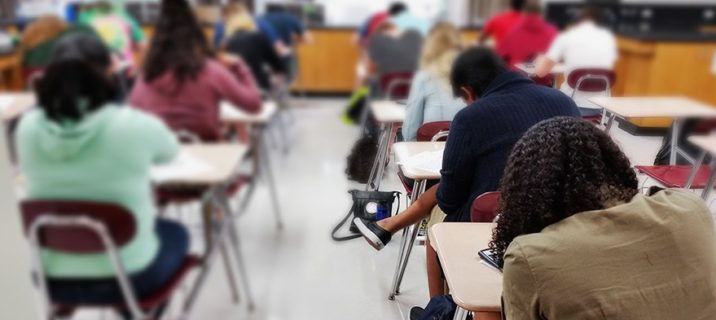A Student's Perspective: Distance Learning and Organization
- Anthony

- Aug 18, 2020
- 3 min read
As a student going into the 2020/21 school year, I’m terrified.
No pajamas or heelys allowed.
But in all seriousness, the discussion around distance learning has grown exponentially (much like the virus that caused these changes in the first place). I think I’m speaking for everyone when I say that it’s a complicated debate, and that both anxiety and excitement
may be increasingly prevalent in the days leading up to our first session of e-instruction.

I know that scheduling for schools and parents alike proves to be a challenge on its own, and
trying to make things flexible yet robust can be exasperating.
An article on Education Week titled “Should Teachers Enforce School Rules When Students Are Learning at Home?” details how finding the right amount of ‘normalcy’ can be difficult: He has only two rules for students during video classes: Be clothed, and be respectful of others... Stumpenhorst, the 2012 Illinois Teacher of the Year, doesn't believe teachers should mandate that students have their video cameras on.
Some teachers responded to his tweet, saying that they relied on seeing their students' faces on camera to get real-time feedback… "I understand as a teacher, you want kids to be engaged in what you're teaching, but I think rigid expectations of compliance is just going about it the wrong way," Stumpenhorst said in an interview. "It seems very invasive."
I think there’s a lot of value in the way that Stumpenhorst thinks about this issue, especially when it comes to making kids feel “comfortable”. In situations like this, it’s invaluable to take into account the context or the surrounding environment where these teacher-to-student and student-to-student interactions are actually taking place.
Most if not all of these kids are going to be learning in a (hopefully) familiar and safe environment for them, a place where they eat, sleep, and live their lives as they please; it doesn’t even come close to the formal and carefully regulated climate of a school setting.
I agree that boundaries are an important issue when considering just how to enforce some sort of organized system of instruction, but the problem arises when we start to fall into thinking virtual classes and live sessions will and can ever work like the real thing. Proponents and those opposed to e-learning both agree on one key point, that face-to-face instruction holds a space in many of our hearts, minds, and schedules that can’t be substituted by a couple Microsoft Teams or Zoom get-togethers. Finding the right balance of structure and freedom is something people struggle with without a worldwide pandemic.

This, coupled with the task of making sure everybody in the house stays on track, isn’t the ideal environment for anybody to say that either method- one hundred percent in school or one hundred percent out- is the be-all, fix-all solution to all our problems. However, considering the circumstances, it’s indubitable that boundaries are both necessary and valuable for everyone's health.
"isn’t the ideal environment for anybody to say that either method- one hundred percent in school or one hundred percent out- is the be-all, fix-all solution to all our problems."
There’s really no right or wrong way to approach the first day of virtual school, online instruction, e-learning, or any new term we need to accommodate our path to move forward. However, I think that the most useful way would be a predisposition of learning, growing, and being open to change.
If coronavirus was the Great White of the entire year, think about virtual school as a way of testing the waters, working with our current circumstances, rather than fighting against them and forcing compliance out of people who have so much still to accomplish and change. That goes for everybody, really, and compassionate thinking, language, and action are a must- not just for the pandemic, but for every day.








Comments